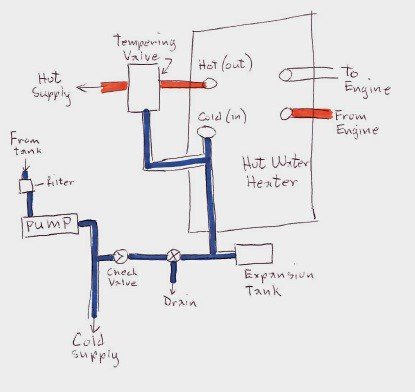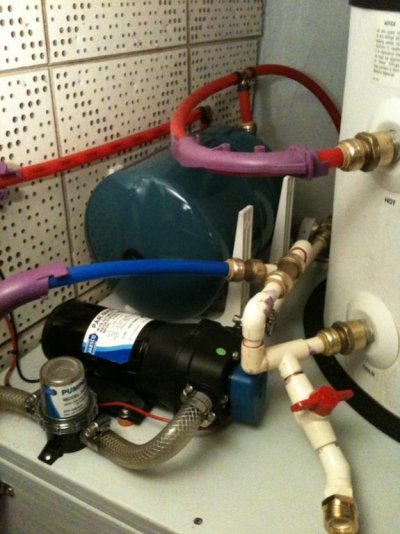dvd
Senior Member
I have moved my hot water heater and am re-plumbing it. The old set-up had two problems: 1) a poorly-functioning check valve on the cold water side so when I turned on the cold water tap hot water came out for a while and 2) ultra-hot water came out of the taps after running the engine.*
Solving the second problem should be easy by placing a tempering valve on the hot water outflow. The first problem is, I suspect, from water expansion as it is being heated. If I have a well-functioning check valve, the water expansion will likely cause my overpressure valve to open, spilling very hot water into the bilge. I'm thinking of placing an expansion tank on the cold water supply side of the water heater to prevent that. I calculate the maximum expansion for the 11 gallon tank to be about a quart if heated to 180 degrees (engine temp), so can I use one of these*type of accumulator tank for my expansion tank? Any household expansion tank starts at around 2-3 gallons -- way more than I would ever need.
Thanks,
dvd
Solving the second problem should be easy by placing a tempering valve on the hot water outflow. The first problem is, I suspect, from water expansion as it is being heated. If I have a well-functioning check valve, the water expansion will likely cause my overpressure valve to open, spilling very hot water into the bilge. I'm thinking of placing an expansion tank on the cold water supply side of the water heater to prevent that. I calculate the maximum expansion for the 11 gallon tank to be about a quart if heated to 180 degrees (engine temp), so can I use one of these*type of accumulator tank for my expansion tank? Any household expansion tank starts at around 2-3 gallons -- way more than I would ever need.
Thanks,
dvd




